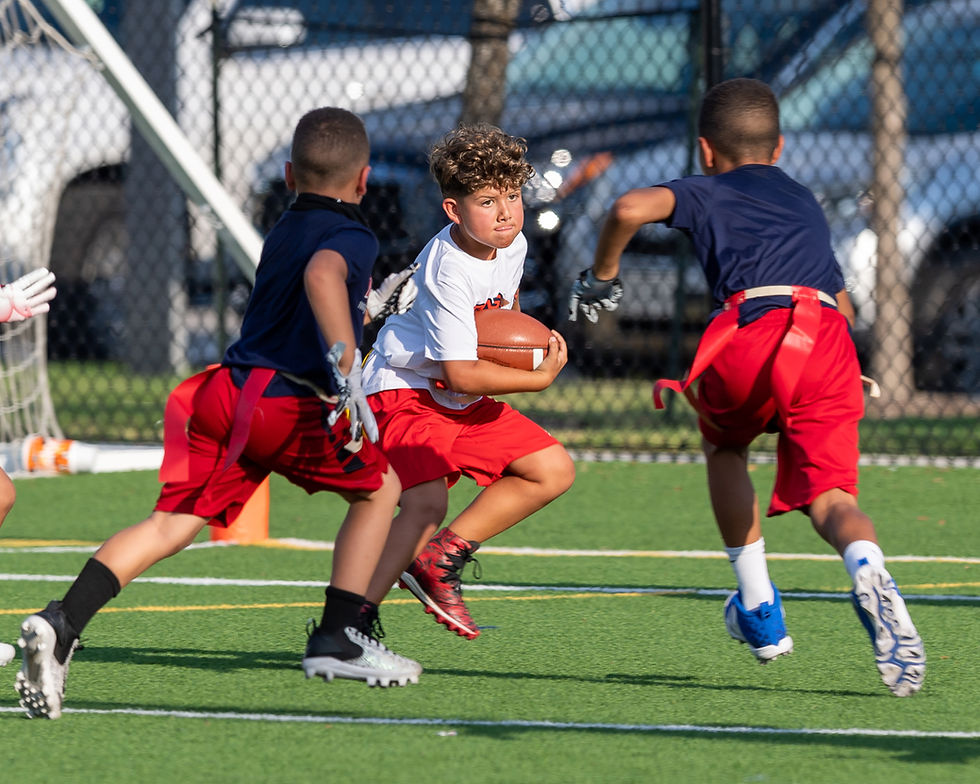The Pareto Principle: Coaching Youth Football Smarter, Not Harder
- Jay Glaspy

- Mar 26
- 3 min read
Updated: Nov 16

80/20 aka Pareto Principle Coaching for Youth Football
As a youth football coach, your time is limited—and so is your players’ attention. Between school, short practices, and game-day pressure, you only get a few hours a week to make an impact. That’s where the Pareto Principle comes in. Also known as the 80/20 Rule, the Pareto Principle states that roughly 80% of results come from 20% of your efforts. Applied to youth football, it means that a small portion of what you teach will drive most of your team’s success on the field. The key is knowing what 20% to focus on. If you're coaching, this principle can help you maximize limited practice time, simplify your strategy, and get better results with less stress.
The 80/20 Rule in Action: What Really Wins Games?
Most youth football games are decided by:
✅ Ball security
✅ Basic blocking and tackling
✅ Alignment and assignment
✅ Effort and hustle
Not by fancy formations, trick plays, or complex schemes.
According to the Pareto Principle:
20% of your playbook likely produces 80% of your offensive success.
20% of your defensive concepts prevent 80% of the big plays.
20% of your players’ habits determine 80% of the team’s consistency and performance.
So, why spend 80% of your practice working on low-impact drills, fringe plays, or overcoaching details that won’t matter when the lights come on?
How Coaches Can Apply the Pareto Principle
1️⃣ Prioritize the Core Fundamentals
Focus on the drills and techniques that show up in every single game:
Snap exchange
Pursuit angles
Blocking leverage
Flag or form tackling
Stance, start, and alignment
✅ Spend 80% of practice time on the 20% of skills that every player needs to execute consistently.
2️⃣ Trim the Playbook
More plays don’t equal better offense. In fact, more plays often create more confusion at the youth level.
Focus on your top 3-5 base plays. Rep them until players can run them in their sleep.
Install tag systems or simple variations to dress things up without overwhelming players.
Use formations and motions only if they enhance what already works.
🔥 The best teams run fewer plays with better execution.
3️⃣ Identify Your Impact Players & Simplify Roles
You don’t need 11 superstars. You need to:
Identify the 2-3 players who will touch the ball the most.
Build simple concepts that highlight their strengths.
Assign other players clear, repeatable roles that help them succeed.
The 80/20 rule reminds us that not every player needs to do everything—just their job.
4️⃣ Limit Conditioning & Focus on Speed and Recovery
Many youth coaches overdo conditioning, thinking it builds toughness.Instead, teach speed mechanics, footwork, and recovery—the 20% of physical training that leads to 80% of performance gains.
📣 Instead of running laps, rep 10-yard sprints, 5-10-5 agility, and fast footwork drills that actually translate to football.
5️⃣ Coach the Mental Game Early
Confidence, focus, and composure under pressure often separate winners from losers—especially in tight youth games.
Teach pre-snap readiness.
Encourage short memory mentality after mistakes.
Reinforce positive habits and high-effort standards.
These habits are small but massively impactful—the 20% that drives 80% of performance consistency.

Final Thoughts: Less is More in Youth Football
When you're working with young athletes, you don’t need to do more—you need to do what matters most, better. The Pareto Principle reminds football coaches to focus on the few things that move the needle:
Basic execution
Simple schemes
Player confidence
Repetitions over variety
Speed and efficiency
About Us
Command Football Academy was founded by Coach Jay Glaspy, a retired U.S. Army Special Forces Veteran, youth football coach, NASM-certified personal trainer, and speed coach committed to developing high-performing athletes.
With more than 25 years of leadership and coaching experience in various industries, Coach Glaspy effectively combines a deep understanding of mental performance, youth athletic development, and position-specific football training. Academically, he holds a Master’s in Organizational Leadership and a Bachelor’s in Psychology, bringing a holistic approach to athletic performance and personal growth.
At Command Football Academy, we coach youth and high school football players to perform with purpose, master the basics, and compete with confidence—developing skills that elevate performance both on the field and in everyday life.
Contact us to learn more: contact@commandfootballacademy.com



Comments